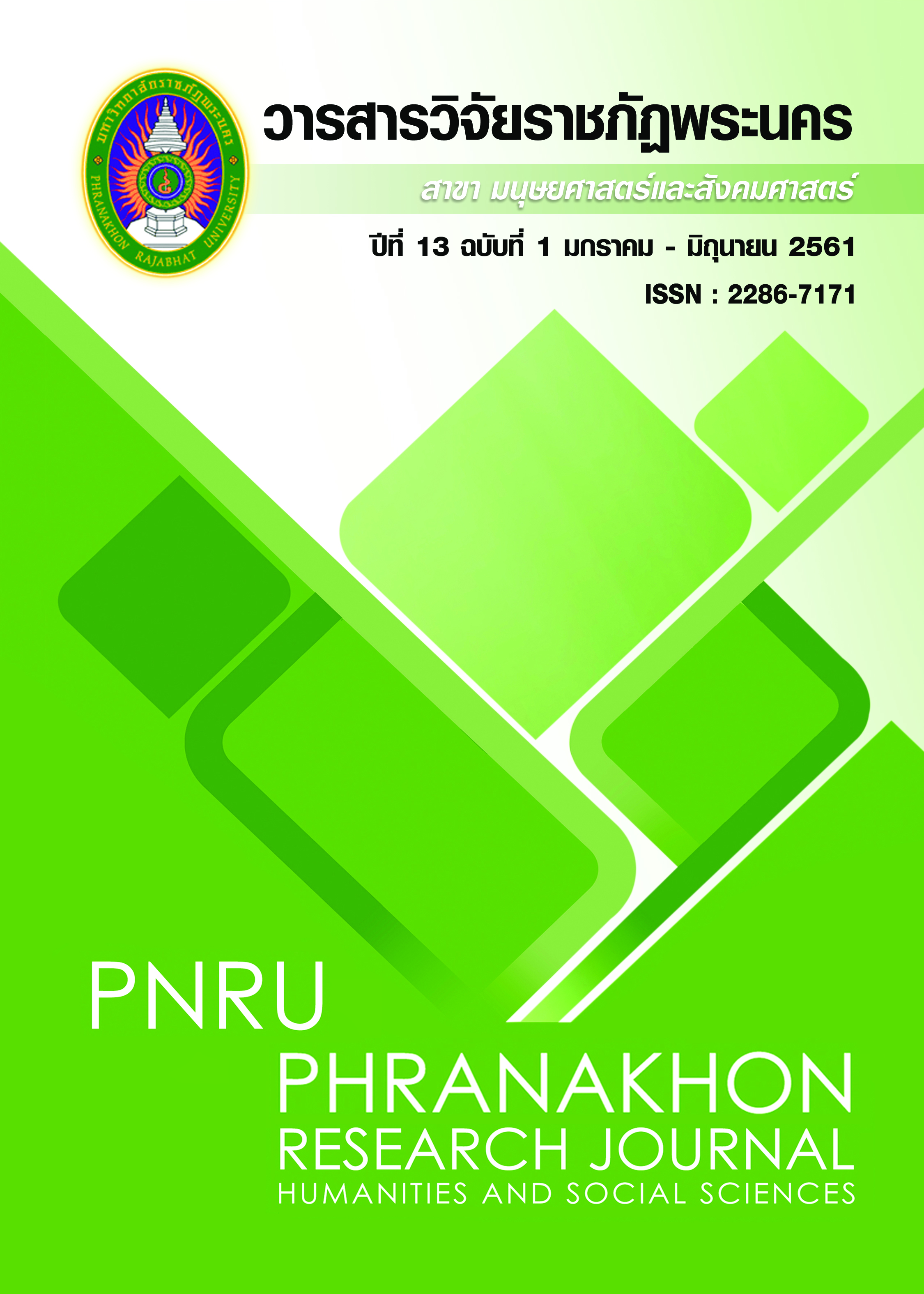THE EFFECTS OF CRITICAL FACTORS ON ORGANIZATIONAL CHANGE OF THAI GARMENT FIRMS
Main Article Content
Abstract
The objectives of this study are to investigate the level of organizational change in Thai
garment firms together with examining the critical factors affecting organizational change. How Thai garment firms take change actions in strategies and plans, work processes, organizational structure, and organizational culture are also explored for better understanding of change implementation. The mixed method research design is employed by in-depth interviews together with the surveys. The samples are 344 garment firms in Thailand. The results reveal that the overall organizational change of Thai garment firms is moderate level. Organizational culture appears to be more remarkable altered than other components, following by organizational strategies and plans, work processes, and organizational structure, respectively. The stepwise multiple regression indicates that, among five critical factors which positively affect organizational change implementation of Thai garment firms, employee participation has the greatest contribution following by international trade policies, sense of urgency for change, economic situations, and technology advancement. Several change actions are implemented, for example, the revision of prior paternalistic management culture to the professional management style, the shift on manufacturing and investment plans by relocating production bases to CLMV countries and the modification of marketing strategies with product differentiation as well as the alteration of targeted market to niche market instead of mass market. The findings of this study benefits not only individual garment firms but also Thailand garment industry to design appropriate strategies for responding uncertainty and managing change in an effective way.
Article Details
Each publish articles were copyright by Phranakorn Rajabhat University
Any contents which appeared in each articles in the journal were authors personal opinion. It did not relate to Phranakorn Rajabhat University and other instructors in the university. Each authors would take responsibility on their articles. If there are any mistake, the authors will take responsibility themselves
References
Burns, B. (2009). Managing change. 5th Edition. Harlow: Pearson.
Burke, W. (2008). Organization change: theory and practice. CA: Sage Publications, Inc.
Coetsee, L. (1999). From resistance to commitment. Public Administration Quarterly, 23, 204-222.
Covin, T. J. & Kilmann, R. H. (1990). Participant perceptions of positive and negative influences on large-scale change. Group and Organization Studies, 15, 233-248.
DiFonzo, N. & Bordia, P. (1998). A tale of two corporations: managing uncertainty during organizational change. Human Resource Management, 37(3), 295- 303.
Durmaz, H. (2007). Officer attitudes toward organizational change in the Turkish National Police. Ph.D. Thesis, University of North Texas, USA.
Eby, L. T., Adams, D. M., Russell, J. E. A., & Gaby, S. H. (2000). Perceptions of organizational readiness for change: factors related to employees’ reactions to the implementation of team-based
selling. Human Relations, 53, 419-428.
Johnson, J. (2009). Assessing workers’ true and perceived sense of urgency during strategic change: a descriptive and correlation examination. Ph.D. Thesis, Dissertation of Doctor of Philosophy, Northcentral University, USA.
Kerber, K. & Buono, A. (2005). Rethinkong organizational change: reframing the chanllenge of change management. Organization Development Journal, 23(3), 23.
Kimberly, J. R. & Nielsen, W. R. (1975). Organization development and change in organi-zational performance. Administrative Science Quarterly, 20, 191-206.
Kotter, J., & Schlesinger, L. (1979). Choosing strategies for change. Harvard Business Review, 57(2), 106-114.
Kuhn, T. R. (2000). The complex process of planned organizational change developing a model of knowledge activity and communication networks. Ph.D., Arizona State University, USA.
Meynell, F. (2008). A second-order approach to evaluating and facilitating organizational change. Action Research, 3, 211-231.
Lim, J. A. (2008). Effects of multivariate antecedent factors on coping readiness for organizational change. Ph.D., Northcentral University, USA.
Lussier, R. N. & Sonfield, M. C. (2004). Family business management activities, styles and characteristics: a correlation study. American Journal of Business, 19(1), 47-54.
Majewska-Button, M. (2010). Factors influen-cing organizational change in the department of Defense. Ph.D. Thesis, University of Oklahoma, USA.
Piderit, S. K. (2000). Rethinking resistance and recognizing ambivalence: a multidi-mensional view of attitudes toward an organizational change. Academy of Management Review, 25, 783-794.
Robbins, S. P. (2005). Essentials of organizational behavior. Upper Saddle River, NJ: Pearson Prentice Hall.
Schein, E. (1992). Organizational culture and leadership. 2nd edition. SF: JosseyBass.
Siy, G., Carrillo, R. & Congep (Confederation of Garments Exporters of the Phillipines). (2007). ASEAN Textile and Garment Industry Outlook (2007). Retrieved April 10, 2007, from https://pdf.usaid.gov/pdf_docs/Pnadj684.pdf.
Thailand Textile Institute. (2012). Thai textile statistics 2011/2012. Bangkok: Art and part Update, Co, Ltd.
Thailand Textile Institute. (2016). Thai Textile and Fashion Outlook (Issue. 19, AprilJune 2016). Bangkok: (n.p.).
Watchravesringkan, K., Karpova, E. E., Hodges, N. N., Copeland, R. (2010). The competitive position of Thailand’s apparel industry: challenges and opportunities for globalization. Journal of Fashion Marketing and Management, 14(4), 576-597.
Zhang, Y. (2011). Organizational changes in state education agencies: Responses to standards-based accountability. Ph.D. Thesis, College Park, University of Maryland, USA.

